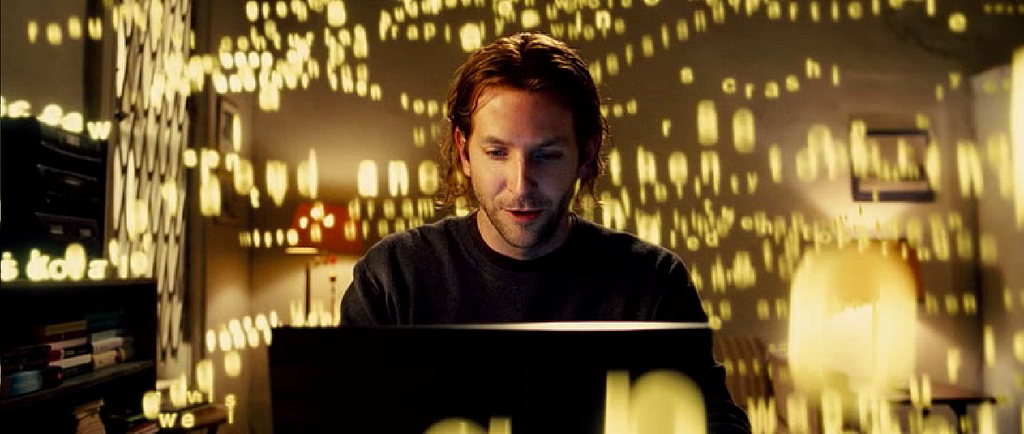
If done right, editing can take your content from drab to fab Image Credits: Limitless; Virgin Produced“It’s time to go to war with yourself.” — David Goggins
Image Credits: Limitless; Virgin Produced“It’s time to go to war with yourself.” — David Goggins
If writing is therapy, editing is war. It’s a war against your preconceived brainchildren. Editing and writing, although woven from the same fabric, are different sides of a coin. Perfectly yin and yang.
Great writing is an outcome of deliberately working on three areas:
The present by anchoring a fixed purpose through writing.The past by giving up on old notions through relentless editing.The future by adopting new ideas, beliefs, and aspirations.
The first one comes easy. What we often forget is that a new level of performance can only be achieved by unlearning the old and then learning anew.
Commandment #1: Read thrice
Read a book thrice and you shall be thrice as wise as someone who has only read it twice. Read your content thrice and it shall be thrice as readable as content that has only been read twice.
“Three” is the magic number. The reason being that the first read is nothing but a visceral experience that washes over you. The second read is when you closely observe every sentence and its structure. And finally, the third time’s the charm when you observe every single word and notice how it all come together as one unit.
“The secret to editing your work is simple: you need to become its reader instead of its writer.” — Zadie Smith
A part of being a writer is seamlessly switching between two roles. When you observe your content from a third-person perspective, you see it as a critical reader. In turn, you unflinchingly delete, re-write, and re-phrase.
Put simply, in Bruce Lee’s words: “Be shapeless, be formless…be like water my friend.”
Commandment #2: Work with — not against — the editors“Editing with a writer is a joyous collaboration — not even a collaboration, but a conversation, a colloquy, a back-and-forth” — Michael Pietsch (editor of David Foster Wallace’s Infinite Jest)
The keyword in the insight above is “collaboration.” A collaboration where no role is primary. An editor’s work may often go unnoticed, but it’s necessary nonetheless.
An example of this is the bittersweet — less bitter, more sweet — relationship between T.S Eliot and his editor, Ezra Pound. The original typescript of Eliot’s The Waste Land is chock-full of Pound’s suggestions. While Eliott ignored some of them, he accepted many others.
Who we get to work with isn’t something we can choose. What we get to choose is how we handle rejection and criticism from someone who neither has an emotional obligation to our work, nor a dreadful grudge.
Commandment #3: Attempt changes that you don’t think will work
Film and written content have a lot in common. Every word is like a frame, a sentence is an entire reel, and a complete draft is a final film. Putting together two unlikely reels may not always give you the desired result. But sometimes, it can surprise you.
“The definition of insanity is doing the same thing over and over and expecting different results.” — Albert Einstein
Who would have thought that telling a post-apocalyptic story from a zombie’s perspective could be so fascinating (Warm Bodies)? Who would’ve thought self-help and anti-self-help could merge so well (Mark Manson’s books)?
To stand out, make edits that change perspectives, subvert cliches, and blend polar ideas.
Commandment #4: Spend more time on structure
A well-structured article has two crucial ingredients — it is fluid and immersive.
Immersing viewers through familiarity and storytelling
Using commandment #1, identify the boring bits of your work. With that out of the way, invoke a connection with the reader through familiarity. Familiarity comes from credible quotes, images, and relatable-personal stories.
The rule of thumb here is: “The more, the merrier.” In a world of goldfish attention spans, the more you do to make your reader stay, the merrier they will be to share their attention.
Creating fluid readability through order
Allow me to explain this one with the golden rule of writing: show more, tell less. Readability then is nothing but a consequence of a balance between “showing” and “telling.”
For instance, commandment #3 first instructs (tells) you to experiment with your writing. It then draws a visual metaphor by drawing parallels between cinema and writing. Following which, it provides credibility through Einstein’s quote. And then finally, it shows you some real-life implications of the rule before getting a little preachy about it.
Commandment #5: Edit vigorously, but never forget your content’s context
Every little battle you fight with your ideas and words later ends up reflecting in your entire article. So instead of making micro-edits, think of how every edit will affect your content on a macro level.
To do this, identify the tone of your content, its purpose, and the emotions you expect it to instill. I edited this post with three macro-goals: a confident tone, a helpful voice, and an uplifting vibe. And if only one reader is able to find a spec of these, I’ll be more than grateful.
“A lion chased me up a tree, and I greatly enjoyed the view from the top.” — Confucius on seeing the bigger picture.
Use the 5 Commandments of Editing to Refine Your Writing was originally published in The Writing Cooperative on Medium, where people are continuing the conversation by highlighting and responding to this story.
Read more: writingcooperative.com
